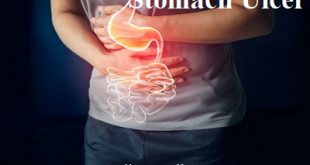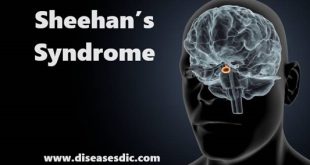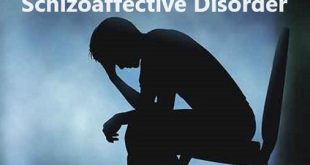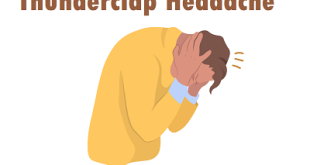Definition
A stroke is a “brain attack”. It can happen to anyone at any time. It occurs when blood flow to an area of brain is cut off. When this happens, brain cells are deprived of oxygen and begin to die. When brain cells die during a stroke, abilities controlled by that area of the brain such as memory and muscle control are lost.
Stroke
History
Hippocrates, the father of medicine, first recognized stroke over 2,400 years ago. At this time stroke was called apoplexy, which means “struck down by violence” in Greek.
It was not until the mid-1600s that Jacob Wepfer found that patients who died with apoplexy had bleeding in the brain. He also discovered that a blockage in one of the brain’s blood vessels could cause apoplexy.
Medical science continued to study the cause, symptoms, and treatment of apoplexy and, finally, in 1928, apoplexy was divided into categories based on the cause of the blood vessel problem. This led to the terms stroke or “cerebral vascular accident (CVA).” Stroke is now often referred to as a “brain attack” to denote the fact that it is caused by a lack of blood supply to the brain, very much like a heart attack is caused by a lack of blood supply to the heart. The term brain attack also conveys a more urgent call for immediate action and emergency treatment by the general public.
Today, there is a wealth of information available on the cause, prevention, risk, and treatment of stroke. Most stroke victims now have a good chance for survival and recovery. Immediate treatment, supportive care, and rehabilitation can all improve the quality of life for stroke victims.
Epidemiology
- There are some races and ethnic origins that are more prone to stroke than others. This includes those of Asian, African or Caribbean origin. Genetic factors and lifestyle factors may also play a role in the causation of stroke.
- Age has an influence on the risk for stroke. After the age of 30 years, the risk of stroke rises steeply globally. Ninety-five percent of all strokes occur in people aged over 65 years. The risk of dying due to stroke also rises with age. Similarly the chance of recovering fully from paralysis and disability caused by stroke also diminish with age. Therefore, the chance of recovering fully from paralysis and disability is very low in aged individuals who have a stroke.
- Males are more at risk of stroke than females. However, with the ever increasing rates of obesity, diabetes, heart disease and smoking habits among men and women, the numbers of women getting stroke is closing in on that of males. In 1999, stroke accounted for over 56,000 deaths in England and Wales, representing 11% of all deaths. Strokes occur at an annual incidence of 110,000 and transient ischemic attack or TIA occurs in 20,000 people each year.
- In the United States, stroke is the third leading cause of death and it kills 160,000 Americans every year. The incidence of new or recurrent strokes each year is around 750,000 and over four million are living with the residual effects of stroke that includes paralysis and disability.
- According to the World Health Organization, 15 million people worldwide suffer a stroke each year. Of these, nearly 5 million die and another 5 million are left permanently disabled.
Types of stroke
There are three main types of stroke: transient ischemic attack, ischemic, and hemorrhagic. It’s estimated that 87 percent of strokes are ischemic.
Types of stroke
Transient ischemic attack
Doctors also call a transient ischemic attack (TIA) a warning or ministroke. A clot that temporarily blocks blood flow to your brain causes a TIA. The blood clot and TIA symptoms last for a short period of time.
Ischemic stroke
An ischemic stroke occurs when a blood clot keeps blood from flowing to your brain. The blood clot is often due to atherosclerosis, which is a buildup of fatty deposits on the inner lining of a blood vessel. A portion of these fatty deposits can break off and block blood flow in your brain. The concept is similar to that of a heart attack, where a blood clot blocks blood flow to a portion of your heart.
An ischemic stroke can be embolic, meaning the blood clot travels from another part of your body to your brain. An estimated 15 percent of embolic strokes are due to a condition called atrial fibrillation, where your heart beats irregularly.
A thrombotic stroke is an ischemic stroke caused by a clot forming in a blood vessel in your brain. Unlike a TIA, the blood clot that causes an ischemic stroke won’t go away without treatment.
Hemorrhagic stroke
A hemorrhagic stroke results when a blood vessel in your brain ruptures or breaks, spilling blood into the surrounding tissues.
There are two types of haemorrhagic strokes: The first is an aneurysm, which causes a portion of the weakened blood vessel to balloon outward and sometimes rupture. The other is an arteriovenous malformation, which involves abnormally formed blood vessels. If such a blood vessel ruptures, it can cause a haemorrhagic stroke.
Risk factors of stroke
Overall, the most common risk factors are:
- High blood pressure,
- High cholesterol,
- Smoking,
- Diabetes, and
- Increasing age.
Heart conditions like atrial fibrillation, patent foramen ovale, and heart valve disease can also be the potential cause of stroke.
When it occurs in younger individuals (less than 50 years old), less common risk factors to be considered include illicit drugs, such as cocaine or amphetamines, ruptured aneurysms, and inherited (genetic) predispositions to abnormal blood clotting.
Causes of stroke
The different forms of stroke have different specific causes.
Causes of ischemic stroke
- Ischemic stroke is the most common form, accounting for around 85 percent of strokes. This type of stroke is caused by blockages or narrowing of the arteries that provide blood to the brain, resulting in ischemia – severely reduced blood flow that damages brain cells.
- These blockages are often caused by blood clots, which can form either in the arteries within the brain, or in other blood vessels in the body before being swept through the bloodstream and into narrower arteries within the brain. Fatty deposits within the arteries called plaque can cause clots that result in ischemia.
Causes of hemorrhagic stroke
- Hemorrhagic strokes are caused by arteries in the brain either leaking blood or bursting open. The leaked blood puts pressure on brain cells and damages them. It also reduces the blood supply reaching the brain tissue after the hemorrhage point. Blood vessels can burst and spill blood within the brain or near the surface of the brain, sending blood into the space between the brain and the skull.
- The ruptures can be caused by conditions such as hypertension, trauma, blood-thinning medications, and aneurysms (weaknesses in blood vessel walls).
- Intracerebral hemorrhage is the most common type of hemorrhagic stroke and occurs when brain tissue is flooded with blood after an artery in the brain bursts. Subarachnoid hemorrhage is the second type of hemorrhagic stroke and is less common. In this type of stroke, bleeding occurs in an artery in the subarachnoid space – the area between the brain and the thin tissues that cover it.
Causes of transient ischemic attack (TIA)
- TIAs are different from the kinds above because the flow of blood to the brain is only briefly interrupted. TIAs are similar to ischemic strokes in that they are often caused by blood clots or other clots.
- TIAs should be regarded as medical emergencies just like the other kinds of stroke, even if the blockage of the artery and symptoms are temporary. They serve as warning signs for future strokes and indicate that there is a partially blocked artery or clot source in the heart.
- According to the Centers for Disease Control and Prevention (CDC), over a third of people who experience a TIA go on to have a major stroke within a year if they have not received any treatment. Between 10-15 percent will have a major stroke within 3 months of a TIA.
Symptoms of stroke
Symptoms of stroke depend upon what are of the brain has stopped working due to loss of its blood supply. Often, the patient may present with multiple symptoms including the following:
- Acute change in level of consciousness or confusion
- Acute onset of weakness or paralysis of half or part of the body
- Numbness of one half or part of the body
- Partial vision loss
- Double vision
- Difficulty speaking or understanding speech
- Difficulty with balance and vertigo
Complications
Behavior changes: Having a stroke can contribute to depression or anxiety. You also may experience changes in your behavior, such as being more impulsive or more withdrawn from socializing with others.
Speech difficulties: A stroke can impact areas of your brain having to do with speech and swallowing. As a result, you may have difficulty reading, writing, or understanding other people when they’re speaking.
Numbness or pain: A stroke can cause numbness and decreased sensation in parts of your body. This can be painful. Sometimes injury to the brain can also affect your ability to sense temperature. This condition is known as central stroke pain and can be difficult to treat.
Paralysis: Because of the way your brain works to direct movement, a stroke in the right side of your brain can affect movement on the left side of your body and vice-versa. Those who’ve had a stroke may not be able to use facial muscles or move an arm on one side.
You may be able to regain lost motor function, speech, or swallowing abilities after a stroke through rehabilitation. However, these can take time to regain.
Diagnosis and tests
There are several different types of diagnostic tests that doctors can use to determine which type of stroke has occurred:
Physical examination – a doctor will ask about the patient’s symptoms and medical history. They may check blood pressure, listen to the carotid arteries in the neck, and examine the blood vessels at the back of the eyes, all to check for indications of clotting.
Blood tests – a doctor may perform blood tests to find out how quickly the patient’s blood clots, the levels of particular substances (including clotting factors) in the blood, and whether or not the patient has an infection.
CT scan – a series of X-rays that can show hemorrhages, strokes, tumors, and other conditions within the brain.
MRI scan – radio waves and magnets create an image of the brain to detect damaged brain tissue.
Carotid ultrasound – an ultrasound scan to check the blood flow in the carotid arteries and to see if there is any plaque present.
Cerebral angiogram – dyes are injected into the brain’s blood vessels to make them visible under X-ray, to give a detailed view of the brain and neck blood vessels.
Echocardiogram – a detailed image of the heart is created to check for any sources of clots that could have traveled to the brain to cause a stroke.
Treatment and medications
TIA
Treatments fo r transient ischemic attack (TIA) include taking medicines that will help prevent future strokes. These medicines include antiplatelets and anticoagulants.
- Antiplatelets reduce the likelihood that components of your blood called platelets will stick together and cause a clot. Aspirin (Bufferin) and clopidogrel (Plavix) are antiplatelet medications.
- ticoagulants are medicines that reduce the buildup of clotting proteins. Several different types of these medications exist, including warfarin (Coumadin) and dabigatran (Pradaxa).
- A doctor may also recommend a surgery called a carotid endarterectomy. This removes plaque buildup in the carotid artery of your neck, which is a major cause of stroke.
Ischemic stroke
- The ischemic stroke treatments you receive depend on how quickly you get to a hospital. They also depend on your individual medical history.
- If you seek treatment within three hours for this type of stroke, your doctor may be able to give you a medicine known as tissue plasminogen activator (TPA). This medicine, which is delivered through an IV, can dissolve the clot. However, not all people can receive TPA due to risks for bleeding. Your doctor has to carefully consider your medical history before administering TPA.
- Doctors can use procedures to physically remove the clot or deliver clot-busting medications to your brain. These treatments aren’t always beneficial, as your medical history may put you at risk for certain side effects.
Hemorrhagic stroke
Hemorrhagic stroke treatments involve trying to stop bleeding in your brain and reduce the side effects associated with brain bleeding. Side effects may include increased intracranial pressure. Surgical procedures include surgical clipping or coiling. These are designed to keep the blood vessel from bleeding further.
You may be given medications to reduce intracranial pressure. You may also need blood transfusions to increase the amount of blood-clotting materials in your blood to try to stop bleeding.
Rehabilitation of stroke
Strokes are life-changing events that can affect a person both physically and emotionally, temporarily or permanently. After a stroke, successful recovery will often involve specific rehabilitative activities such as:
Speech therapy: To help with problems producing or understanding speech. Practice, relaxation, and changing communication style, using gestures or different tones for example, all help.
Physical therapy: To help a person relearn movement and co-ordination. It is important to get out and about, even if it is difficult at first.
Occupational therapy: To help a person to improve their ability to carry out routine daily activities, such as bathing, cooking, dressing, eating, reading, and writing.
Joining a support group: To help with common mental health problems such as depression that can occur after a stroke. Many find it useful to share common experiences and exchange information.
Support from friends and family: To provide practical support and comfort. Letting friends and family know what can be done to help is very important.
Rehabilitation is an important and long part of treatment. With the right help, rehabilitation to a normal quality of life is possible, depending on the severity of the stroke.
Prevention for stroke
The best way to prevent is to address the underlying causes. This is best done by living healthfully, which means:
- Eating a healthy diet.
- Maintaining a healthy weight.
- Exercise regularly.
- Don’t smoke.
- Avoiding alcohol or drink moderately.
Eating a healthful diet means plenty of fruits, vegetables, and healthy whole grains, nuts, seeds, and legumes; eating little or no red or processed meat; limiting intake of cholesterol and saturated fat (typically found in foods of animal origin); and minimizing salt intake so as to support healthy blood pressure.
Other measures taken to help reduce the risk of stroke include:
- Keeping blood pressure under control.
- Managing diabetes.
- Treating obstructive sleep apnea (if present).
As well as these lifestyle changes, a doctor can help to reduce the risk of future ischemic strokes through prescribing anti-coagulant and/or anti-platelet medication. In addition to this, the arterial surgery previously mentioned can also be used to lower the risk of repeat strokes, as well as some other surgical options still being studied.
 Diseases Treatments Dictionary This is complete solution to read all diseases treatments Which covers Prevention, Causes, Symptoms, Medical Terms, Drugs, Prescription, Natural Remedies with cures and Treatments. Most of the common diseases were listed in names, split with categories.
Diseases Treatments Dictionary This is complete solution to read all diseases treatments Which covers Prevention, Causes, Symptoms, Medical Terms, Drugs, Prescription, Natural Remedies with cures and Treatments. Most of the common diseases were listed in names, split with categories.








my mother is suffering paralize attack.her right side body not working. she don’t talking and not known any one. after 5 months not change in her conditions. help me for her recovery
successful recovery will often involve by doing some rehabilitative activities such as speech therapy, physical therapy and occupational therapy will improve their daily routine life activities.
Helpful and educative. I wish i had access to this long time ago however it has come at the right time better late than never.
I’ll put it to good use.
on the 38th of April this year I had mild stroke attack but am getting better everyday but yet I still can’t see clearly, what can I do ? am glad that I downloaded this App.
do optical therapy to get better vision. before that consult doctor.
A well packaged information. Very concise and comprehensive. My students and clients will find this very useful.
physical therapy can bring back any kind of stroke case to an independant or assisted mobile condition. i have had lot of stroke cases with a great successful recovery. An effective rehab can be provided after thorough assessment of the patient. encouragement and motivation also plays a great role in recovery. stroke is a condition which is like a challenge. enough practice through rehabilitation can bring up the chances of recovery. Never give up and keep encouraging the patient to achieve it.
please what is the current treatment guidelines in stroke management
Please look at the treatment part in the post. Thank you.
As a stroke patient, I found the article very interesting, educative and instructional. Please do more to update us with new and upcoming drugs that will ameliorate our conditions.
Sure. we will work it out for more and more new updates. thank you for your feedback.
Since I was discharged from hospital for stroke in January 2016. I have been going through physiotherapy but my problem is that I have a terrible feeling of heaviness in the affected side ie left. Is there a drug for this problem? I’m still attending regular physiotherapy sessions.
L
Please follow regular physiotherapy and consult with a neurologist about the type of medication that can be used by you.
The physiotherapy aspect of management was not well analysed and emphasized as very important for real recovery from stroke
I was one day affected by such disease but by good luck i consult a doctor and recovered.
My husband attacked by stroke at his age of 30.. He took medicine for 3 years but side effects of the English medicine is high day by day..
Then he started to take ayurveda medicines for another 2 years but there is no side effects in ayurveda medicines and my doubt is will he continue his medicines for future till end.. Or consult with doctor and stop medicine.. Tell me clearly about it.. Because nowdays he feels tired level high because of his work… Its worrying for us…
Please consult a doctor to get rid of this problem.
My husband attacked by Storke at the age of 30.. English medicine gave more side effects.. Then he started to take ayurveda now no side effects. But will he continue medicine for full future or will check to doctor and stop treatment..
is it possible that stroke can present with convulsions??
If you’ve suffered from hemorrhagic (bleeding) strokes, you’re much more likely to experience seizures post stroke than those who’ve suffered from an ischemic stroke. You’re also more likely to experience seizures if a stroke takes place in the cerebral cortex, the outer layer of tissue in the brain
My sister have passed away past 8 month; reason being who arrested brain. we had treatment Govt hospital, Anna Salai.
which injection we give to stroke patients
Intravenous injection of tissue plasminogen activator (tPA).
I have mild to moderate atherosclerosis of the brain(mri). I eat a very good diet for the most of the time. I started having physical disabilities my back, htn., memory loss, to name a few. I haven’t been able to work for over a year. I use a walking cane and shower chair, etc.i have a lawyer. I pray I get my disabilty I’m 60 and I am physically and mentally disabled. I didn’t put that I need help with ADLs. My life completely changed in a year and half. i am a nurse and I taught thru college.
Please consult a doctor asap.
please I need ur help can stroke cause loss of memory and hiccup,if so what are the treatment and drugs to use for it please,my dad is suffering from stroke for the past six(6)yrs now
Stroke can cause vascular dementia. Rehabilitation may reduce complications. But consult a doctor once to get treated from a stroke.
my blood pressure is normal,cholesterol too is normal,sugar level too is normal but i always feel serious pain at the left side of my body i find a difficult to raise my hand up and my left leg and also find a difficult to think and to remember and lastly feels some pain at the left part of my head. what should I do please
please consult a doctor for immediate diagnosis of the disease.
my mother just came down with srocke and her right side hand and right leg is not moving the right way,she
feel is in the week from, can you please help me or what can I do to help her.
Please consult a physiotherapist to get the treatment.
Very useful. Methodical in explaining things. I felt like I was attending a medical class. Very impressive English.
my wife have ischemic stroke in right site of brain.now she have pain in head and left hand fingers.left hand fingers works slowly.how to she doesn’t no more pain in head
Please consult a neurologist and rehabilitation team in your locality for the recovery of normal life.
Good evening,What preventive remedies can the one having stroke symptoms and signs do to avoid future stroke occurrance?
Anticoagulants are used for preventing ischemic stroke (the most common type of stroke) and ministroke. The anticoagulant warfarin (Coumadin, Jantoven) is used to prevent blood clots from forming or to prevent existing clots from getting larger.
A stroke patient having persistent serious internal bone pain at left hand,what is the remedy?
Persistent internal bone pain in a stroke patient’s left hand should be evaluated by a healthcare professional. The cause may be related to various factors, such as musculoskeletal issues, nerve damage, or vascular problems. Treatment options may include pain medications, physical therapy, or interventions based on the underlying cause. It’s crucial for the patient to consult with their healthcare provider for a thorough examination and personalized treatment plan.
I had a minor stroke about two years ago and I’m still taking aspirin and turbovas ,how long should I drink these medicines
Kindly consult a doctor for proper prescription and medications.
you have a typo under symptoms…. should say depends on what ….part ….it does not say that.
Is stroke hereditary please? cos my mama suffered stroke for nine years before passing away.
Several genetic disorders can cause a stroke, including sickle cell disease. People with a family history of stroke are also likely to share common environments and other potential factors that increase their risk
l have mild stroke in 2020 and still have pains on the right side ,speech hindering, blurred vision and having sometimes confused.
If you experienced a mild stroke in 2020 and are still having persistent pain on the right side, speech difficulties, blurred vision, and occasional confusion, it is crucial to seek immediate medical attention. Lingering symptoms following a stroke may require further evaluation, including imaging tests like MRI or CT scans, to assess any ongoing issues in the brain. Contact your healthcare provider or go to the emergency room promptly to discuss these symptoms and undergo a thorough examination.